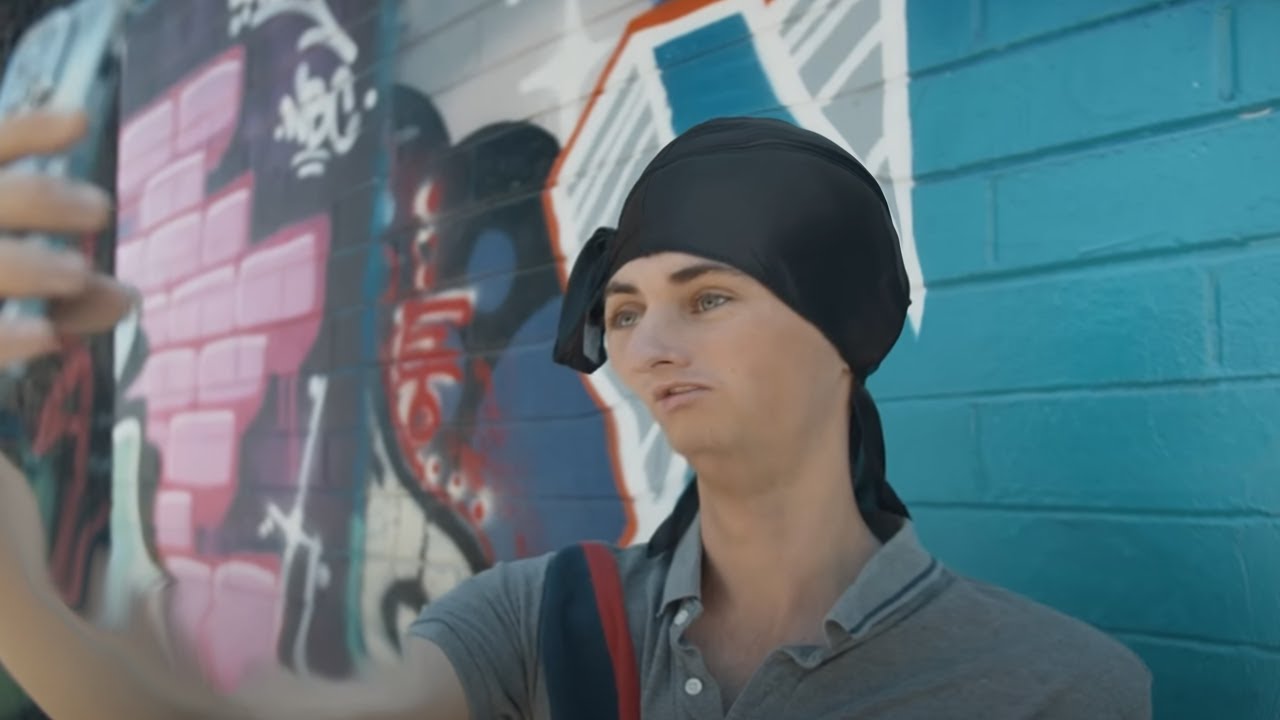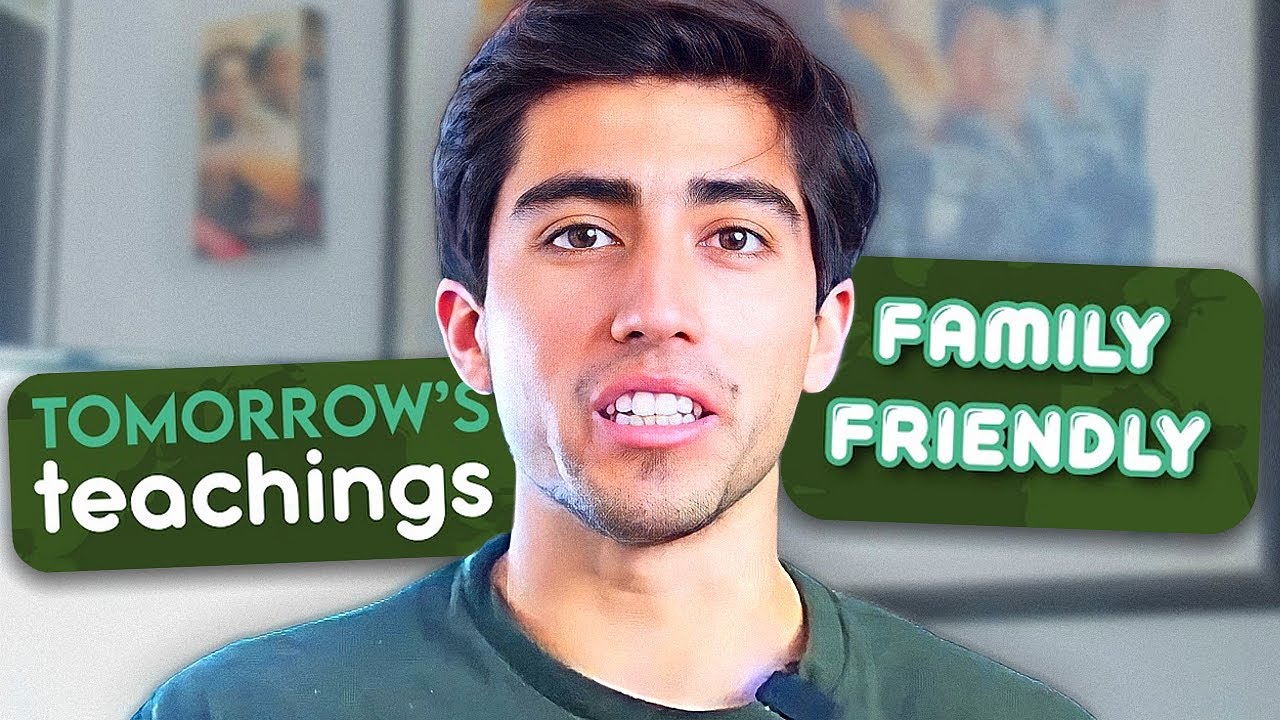In today’s digital world, YouTube has transformed into a powerhouse for educational content. From DIY tutorials to in-depth lectures, it's shaping how we learn. But who truly owns tomorrow's teachings on this platform, and what backgrounds do these creators have? In this blog post, we’ll explore the emergence of educational content on YouTube and the diverse backgrounds of the creators that enrich our learning experiences.
The Rise of Educational Content on YouTube

YouTube started as a platform primarily for entertainment, featuring music videos, vlogs, and short films. However, as the years have gone by, a significant shift has occurred. The rise of educational content on YouTube is not just a trend; it reflects how we seek knowledge in an age defined by instant information access.
So, why has educational content on YouTube gained such immense popularity? Here are a few reasons:
- Accessibility: YouTube is available to anyone with an internet connection, breaking geographical and financial barriers.
- Diverse Learning Styles: Video content can cater to visual, auditory, and kinesthetic learners through engaging animations, lectures, and demonstrations.
- Variety of Topics: Whether it's advanced mathematics, cooking, programming, or painting, the scope of subjects is virtually limitless.
- Community Engagement: Creators often build communities around their channels, allowing for interactive discussions and feedback.
As a result, channels like Khan Academy, CrashCourse, and countless others have amassed millions of followers. These channels provide quality educational content, often rivaling traditional educational institutions. For instance, Khan Academy has revolutionized math education by offering a plethora of videos and exercises, all for free.
Moreover, the platform facilitates unique learning opportunities through features like:
| Feature | Description |
|---|---|
| Playlists | Curated collections of videos organized by topic, allowing users to learn sequentially. |
| Live Streams | Real-time interaction, where viewers can ask questions and engage directly with the educator. |
| Comments Section | A space where viewers can connect, ask clarifying questions, and share insights or additional resources. |
In addition to established educators, YouTube has opened doors for niche creators who specialize in unique subjects or unconventional teaching methods. Perhaps you’ve come across a passionate creator explaining complex scientific concepts with catchy songs or someone baking with lessons in chemistry. It's this diverse range of content that captures attention and makes learning enjoyable.
However, this rise doesn’t come without challenges. Issues surrounding the ownership of content, the credibility of information, and the presence of algorithm-driven content can complicate the landscape of educational videos. In seeking knowledge, it's crucial for viewers to critically evaluate the sources and ensure they are learning from reliable and knowledgeable creators.
As we navigate this vibrant educational ecosystem on YouTube, it’s clear that tomorrow's teachings may not solely belong to traditional institutions but also to those embracing creativity and accessibility. The future of education is being defined by content creators who are passionate about sharing their knowledge and skills with the world.
Also Read This: Adding YouTube Songs to Spotify Step-by-Step Instructions
3. Understanding Content Ownership on YouTube

When it comes to YouTube, content ownership is a crucial topic that every creator should understand. At its core, content ownership refers to the rights a creator holds over the material they produce and share on the platform. This can mean anything from videos, graphics, music, and even comments or discussions around their content.
Let’s break down some important aspects of content ownership:
- Copyright: As a creator, when you produce original content, you automatically gain copyright over it. This means you have the exclusive right to use, distribute, and display your content.
- Licensing: YouTube offers various licensing options. The default is the standard YouTube license, which allows others to watch and share your video. However, you can also opt for a Creative Commons license, enabling others to reuse your work under certain conditions.
- Monetization: Ownership extends to how you monetize your content. YouTube provides several avenues for earning revenue, including ad revenue, sponsored content, and merchandise sales. Understanding how these work helps maximize your earning potential as a creator.
- Dissolution of Ownership: It’s important to recognize situations that can affect your ownership. If you collaborate with others or use third-party content without a license, you might lose some control over your video’s rights.
Ultimately, understanding content ownership on YouTube is about ensuring that you can profit from your hard work while protecting your creative rights. Being aware of how copyright laws interact with the platform can safeguard your content and your brand.
Also Read This: Why Can't I See Comments on YouTube Mobile? How to Fix Comment Viewing Problems
4. The Role of Creators in Shaping Educational Content

Creators play a pivotal role in shaping educational content on YouTube, transforming traditional learning methods into engaging and accessible formats. With millions of users turning to the platform for tutorials, lectures, and advice, creators are not just disseminators of knowledge; they are influential educators driving a new wave of self-directed learning.
Here are a few ways creators are making an impact in the educational landscape:
- Accessibility: YouTube provides a platform that democratizes education. Creators can reach audiences across the globe, offering free resources that may not be available locally, breaking down barriers of traditional education systems.
- Diverse Perspectives: With a mix of creators from various backgrounds, viewers have access to different teaching styles and viewpoints. This diversity enriches learning, allowing students to find methods that resonate with them personally.
- Engagement: Creators often use a conversational style, humor, and modern media techniques to engage viewers. This makes the learning process more enjoyable and less intimidating, encouraging more people to seek out educational content.
- Community Building: Many educational creators foster communities where viewers can discuss concepts and collaborate. This social component enhances the learning experience, transforming it from a solitary task into a communal one.
In essence, YouTube creators are at the forefront of a new educational paradigm. They are not only shaping how knowledge is delivered but also who gets access to it. As they continue to innovate and engage with their audiences, the future of educational content on the platform looks bright and infinitely creative!
Also Read This: How to Add NBA League Pass to YouTube TV: Your Guide to Basketball Streaming
5. Exploring the Backgrounds of Influential YouTube Educators

When it comes to education on platforms like YouTube, the backgrounds of creators can provide incredible insights into their teaching styles and the content they produce. It's fascinating to delve into the diverse paths these educators have taken before stepping into the realm of online teaching.
Take, for example, Dr. Julie Smith, a clinical psychologist who uses her expertise to break down complex psychological concepts into digestible video content. With a background in academia and mental health, Dr. Smith employs storytelling and real-life applications, making her lessons relatable and engaging. Her psychological insights resonate deeply with viewers who may not have prior knowledge of the subject.
Then there's Mark Rober, a former NASA engineer turned YouTube sensation. His transition from rocket science to dynamic educational videos showcases how a strong technical background can enhance creativity in teaching. Mark simplifies engineering concepts and presents them in a way that captivates viewers of all ages. His entertaining projects, like his famous “Giant Super Soaker,” reveal how engineering concepts can be both fun and educational.
Another example is Sal Khan, the founder of Khan Academy. With a background in mathematics and business, Sal started by helping his cousins with their math homework. This passion for teaching quickly turned into an entire educational revolution. His structured approach to video lessons and focus on mastery learning have made math and science accessible to millions of learners worldwide.
- Pathways to Education: Many educators come from traditional academic settings, while others may have unique experiences in fields like engineering, art, or psychology.
- Content Creation Journey: Some creators start as passionate hobbyists, while others may have prior teaching experience in classrooms or tutors.
- Influence of Personal Experiences: Learners’ backgrounds often shape their teaching styles; experiences can motivate educators to create content that addresses gaps in traditional education.
These educators showcase how various backgrounds influence the breadth of knowledge and creativity they bring to the table. It also highlights that anyone can channel their unique experiences into effective teaching moments, despite coming from diverse fields.
Also Read This: Switching Channels on YouTube TV: A Beginner’s Guide
6. The Impact of Background on Teaching Style and Content
The background of YouTube educators isn't just interesting; it plays a crucial role in shaping their teaching style and content. Let’s explore how an educator’s previous experiences influence the way they connect with their audience.
One clear impact is the pedagogical approaches an educator employs. Those with traditional teaching backgrounds often have a structured format in their videos, breaking down complex topics into manageable segments. For instance, educators like Math Antics have a methodical flair that mirrors a classroom setting, which can be comforting for learners seeking clear, step-by-step instruction.
In contrast, those with a less conventional background, such as artists or makers, might adopt a more improvisational or creative approach. Adrianne from The Art of Education showcases this by weaving projects together with anecdotes that make the content resonate on a personal level. The spontaneity in her videos encourages viewers to embrace creativity in their learning.
Another aspect to consider is how educators’ backgrounds can instill a sense of authenticity and passion in their delivery. An educator who has navigated challenges personally, like Kati Morton, a licensed therapist who discusses mental health, often brings empathy and understanding to their teaching. This connection fosters a supportive learning environment, making complexities more relatable for viewers.
The importance of subject matter expertise also cannot be underestimated. An educator with a strong background in a particular field, like physics or history, brings authority and depth to their content. Viewers often appreciate the insight that comes from real-world experience, enriching the learning process. Here, creators like Linda Raynier, who offers career coaching videos, illustrate how professional backgrounds can provide valuable advice to students entering the job market.
In summary, the diverse backgrounds of YouTube educators mold their teaching styles and content significantly. Each creator’s journey contributes to a rich tapestry of resources available on the platform, and that variety caters to learners with different needs and preferences. The magic resides in how these unique backgrounds can combine to create transformative educational experiences that foster understanding and ignite curiosity.
Also Read This: Which YouTuber Am I? Take the Quiz to Find Your YouTube Personality
7. Future Trends in Educational Content on YouTube
YouTube has always been a dynamic platform, evolving with trends and user preferences. As we look towards the future, several key trends are emerging in the realm of educational content that could reshape the way knowledge is shared and consumed.
1. Interactive Learning Experiences:
Gone are the days of passive viewing. The future will likely see an increase in interactive content where viewers can engage directly. This could include:
- Quizzes and polls integrated within videos
- Live Q&A sessions with experts
- Gamified educational formats that reward participation
2. Short-Form Learning:
As attention spans shorten, bite-sized educational videos—think 5 to 10-minute snippets—will gain popularity. Creators will need to distill complex topics into easily digestible segments, making learning more accessible for everyone. Platforms like TikTok have already set a precedent for this trend.
3. Augmented Reality (AR) and Virtual Reality (VR):
With technology rapidly advancing, we can expect a rise in AR and VR educational content on YouTube. Imagine a science lesson where you can explore the human body from within through a VR experience or a history lesson that allows you to “walk” through ancient civilizations. This immersive learning could revolutionize how we perceive and understand information.
4. Personalized Learning Journeys:
AI is stepping into the educational sphere, creating personalized learning experiences. YouTube could utilize machine learning algorithms to suggest tailored content based on individual viewers’ interests and progress, enhancing how people learn at their own pace and style.
5. Focus on Mental Health and Well-Being:
As educational content becomes more prevalent, so does the conversation around mental health. Future creators might incorporate aspects of well-being into their lessons, emphasizing self-care and resilience alongside traditional subjects.
6. Collaboration Beyond Borders:
With the world becoming increasingly connected, we can expect more cross-cultural collaborations. Educators from different countries will join forces to bring diverse perspectives to topics, enriching viewers’ understanding and appreciation of global issues.
In summary, the future of educational content on YouTube is not just bright; it's incredibly promising. As technologies advance and engagement methods evolve, the possibilities for learning are boundless. Innovators will lead this transformation by adapting to these trends, ultimately enhancing our collective quest for knowledge.
8. Conclusion: Who Will Lead Tomorrow's Teachings?
As we step into a future rich with potential for educational content on platforms like YouTube, the question arises: who will stand at the forefront of this evolution?
It's evident that diversity in creators will play a crucial role. With an increasing number of voices, backgrounds, and expertise coming into play, we can expect a broader array of perspectives that challenge traditional educational norms. This democratization of knowledge means that not only established educators but also passionate individuals, professionals, and even students themselves will become influential creators.
Creativity and authenticity will be paramount. Viewers are looking for relatable, engaging content that resonates with their real-life experiences. This means that those creators who can skillfully blend education with entertainment and personal stories will thrive. In a world flooded with information, authenticity becomes the beacon that attracts learners.
Moreover, institutions and educators need to take notice. Partnerships between formal educational organizations and YouTube creators could lead to a new era of learning. Imagine universities collaborating with content creators to provide innovative online courses that not only educate but also entertain!
Finally, it’s important to consider the role of technology. Embracing innovation will be critical. Creators who leverage emerging technologies—be it AR, VR, or AI—will capture the attention of a generation increasingly accustomed to interactive and personalized experiences.
In conclusion, the leaders of tomorrow's teachings on YouTube will be those who can adapt, engage, and inspire. As the landscape of education continually shifts, embracing change and innovating with the times will reveal the true educators of the future. Whatever the next chapter holds, one thing is certain: the journey of learning will remain an exciting adventure!
 admin
admin








